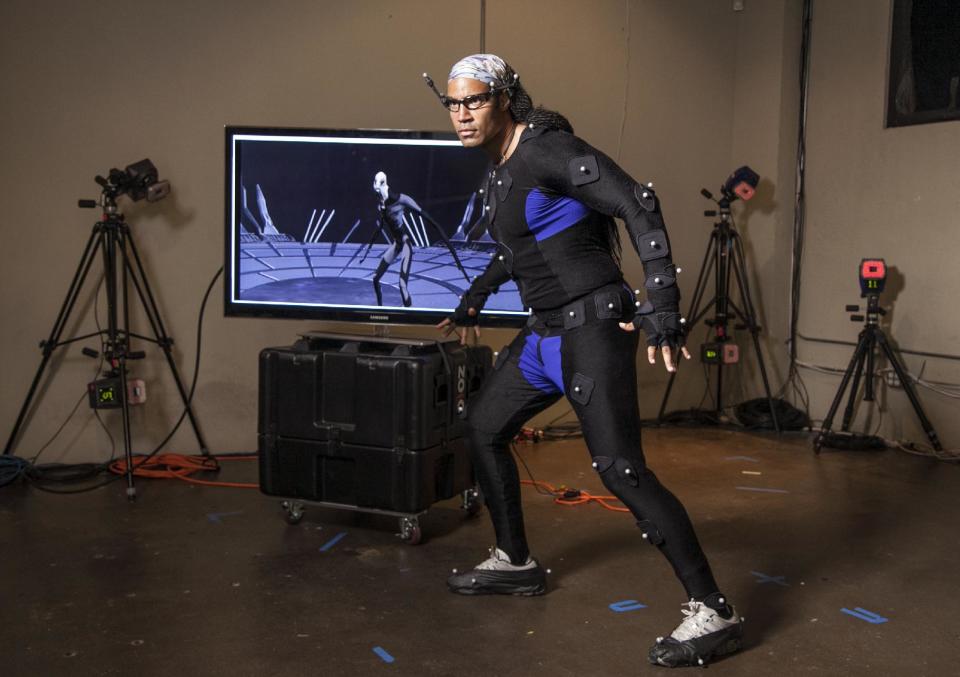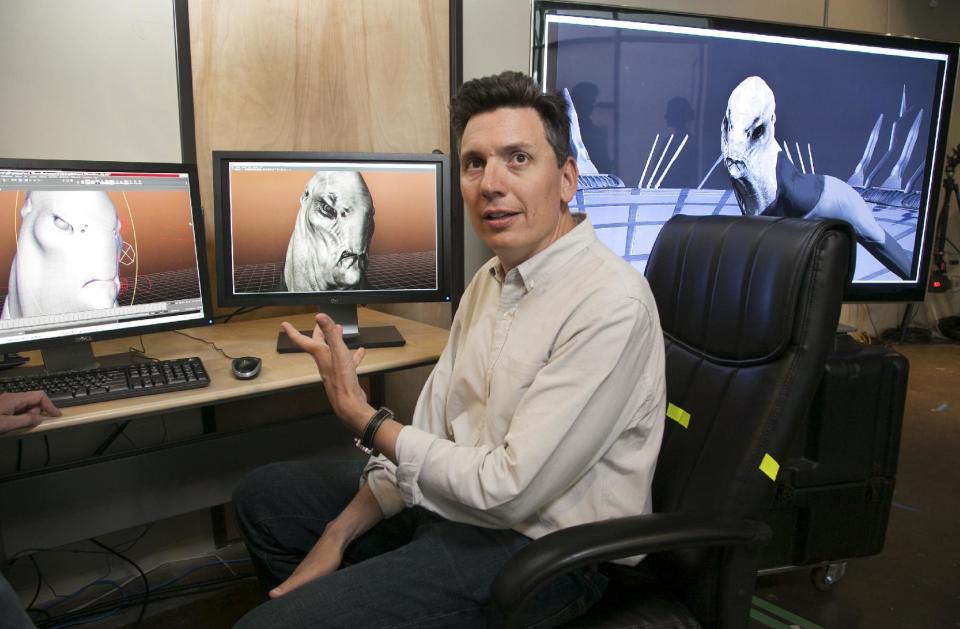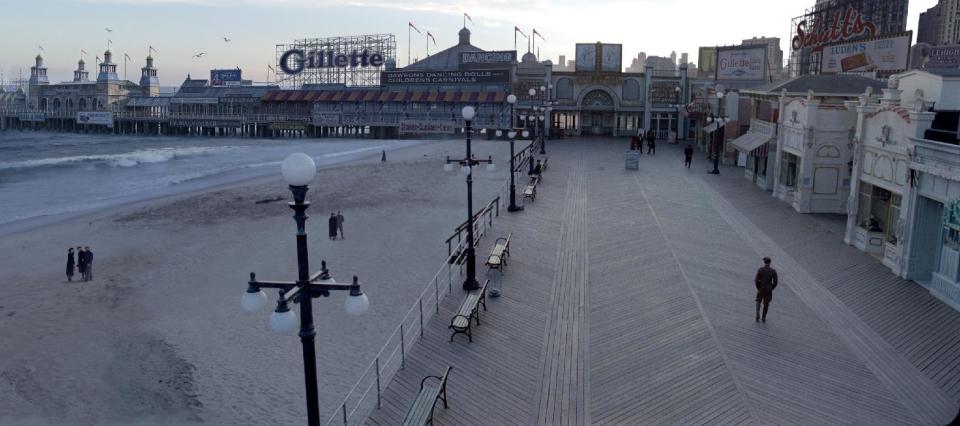Times change and so do Emmy special effects honors
LOS ANGELES (AP) — The art and craft of special effects can make viewers believe that alien invaders walk among us on "Falling Skies" or add the Atlantic City shoreline to a New York set for "Boardwalk Empire."
One result is fantastic, the other is realistic, and the two are so different that it seems unfair they should compete for the same Emmy trophy — so they don't have to, starting with Thursday's nominations.
The TV academy has transformed its visual effects honors this year with two new awards. Category 89 recognizes shows with magic at their core, such as the sci-fi saga "Falling Skies," modern fairy tale "Grimm" or the monster mash of "The Walking Dead."
Category 90, the other newcomer, is for imagery that plays a supporting role in a program not dependent on "special visual effects to tell the story," according to academy guidelines.
Besides "Boardwalk Empire," shows vying for that nomination include such other distinctly down-to-earth dramas as "Mad Men," ''Downton Abbey" and "Game Change."
The revised approach is similar to one adopted in recent years by the Visual Effects Society, an international professional group.
"We want to see recognition for creative work being done, but it's hard to compare spaceships and aliens and castles and ogres" to, say, a computer-generated period building, said Andrew Orloff, special effects supervisor for Zoic Studios, which counts "Falling Skies," ''Mad Men" and "Magic City" among its projects.
The new categories replace a pair of outdated ones, which had TV movies and miniseries competing in one longform group and all continuing series, whether genres like sci-fi or straight storytelling, in another.
The switch was driven in part by the steadily diminishing, but not vanished, presence of longform on TV. This time around, series such as "Game of Thrones" are competing with miniseries including "Titanic" and "Treasure Island" in the nominations hunt for September's Emmy Awards.
"I think that's fair, because what's on 'Falling Skies' and 'Game of Thrones' is on a high level of visual effects that does stand up to a miniseries," Orloff said.
The academy's decision also acknowledges the growing use of subtler effects that are Hollywood's version of trompe-l'oeil painting.
"Boardwalk Empire" used computer-generated imagery, or CGI, to make prohibition era-Atlantic City come alive. A set of that city's Boardwalk circa 1920s, contained in a Brooklyn soundstage, was stretched by software to even more impressive lengths. Technology also added water: the Atlantic Ocean.
Why does "Mad Men" — which holds four Emmy Awards as best drama series and could go for a record fifth if it's nominated again — need such wizardry? It's that consistent 1960s authenticity that creator Matthew Weiner has touted as crucial to the drama.
When Don Draper (Jon Hamm) and his new wife stop at a Howard Johnson's in upstate New York, it is in fact a shuttered, deteriorating one in an LA suburb. Virtual airbrushing was provided by Zoic, which repainted the building, replaced its sign and deleted nearby post-'60s buildings, all digitally.
Even "Episodes," Showtime's contemporary satire about two British writers who come work in Hollywood, has leaned heavily on special effects. To save money, the first season was filmed almost exclusively in London.
Series star Matt LeBlanc's character is living large, with a sleek Malibu beachhouse boasting an excellent ocean view. The scenes, however, were shot in a small house in an English field, and the sunlit coastline and two-story bedroom with floor-to-ceiling glass windows were digitally created by Stargate Studios.
"It's amazing how specific it (the process) is. I remember saying, 'There's something dead about the waves,' recalled Jeffrey Klarik, who created and produces the show with partner David Crane. "Stargate said, 'Sure, we can fix it.'"
When Klarik suggested birds, then birds appeared. For other scenes, palm trees popped up in England and the gated entry to a posh LA housing enclave was partially built and filmed in a wooded area outside London, then completed with CGI.
"It's like putting together a painting," Crane marveled.
Not every show wants to tout how much of its supposed realism is unreal. Although delighted with the outcome, Crane and Klarik kept relatively quiet about filming abroad for the debut season because they didn't want to distract viewers from the story.
When it comes to fantasy and sci-fi shows, there's no need to be shy about fakery.
For TNT's Steven Spielberg-produced "Falling Skies," Zoic devised alien invaders that include multi-legged "skitters," which are brought to life by a combination of CGI and puppetry, and the towering alien leader dubbed the Overlord, created by actor T.J. Storm and performance-capture technology.
Whether filling in an ocean or bringing a creature from outer space to life, the same software and techniques are employed by special effects artists, Orloff said. But he concedes that some effects really set hearts aflutter, and not just among viewers.
"Steven Spielberg, alien invasion, post-apocalyptic — people are going crazy around here (at Zoic), diving over themselves trying to get involved on this show," he said. "It's been great."
___
EDITOR'S NOTE — Lynn Elber is a national television columnist for The Associated Press. She can be reached at lelber(at)ap.org.
___
Online:
http://www.zoicstudios.com
http://www.stargatestudios.net



